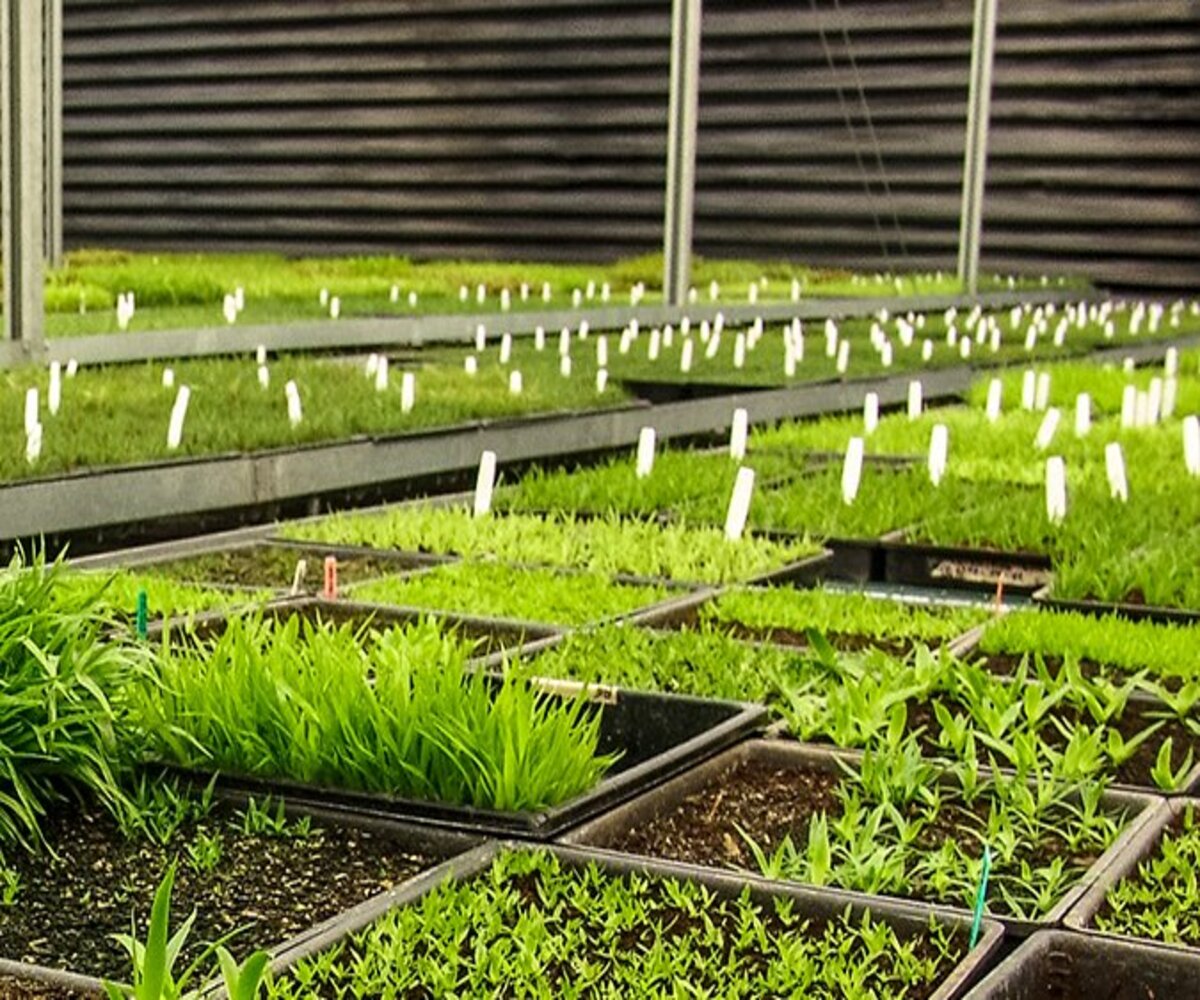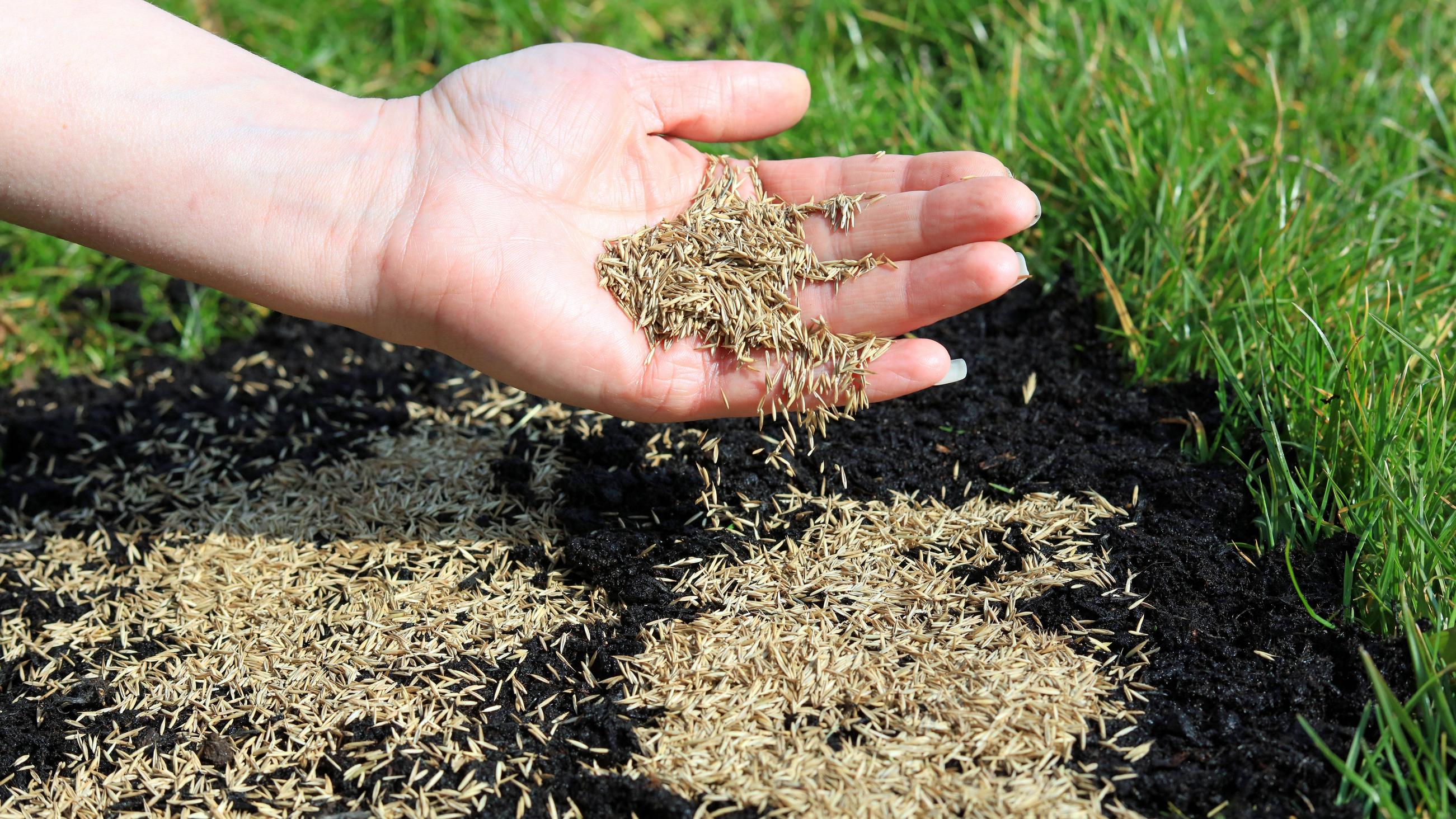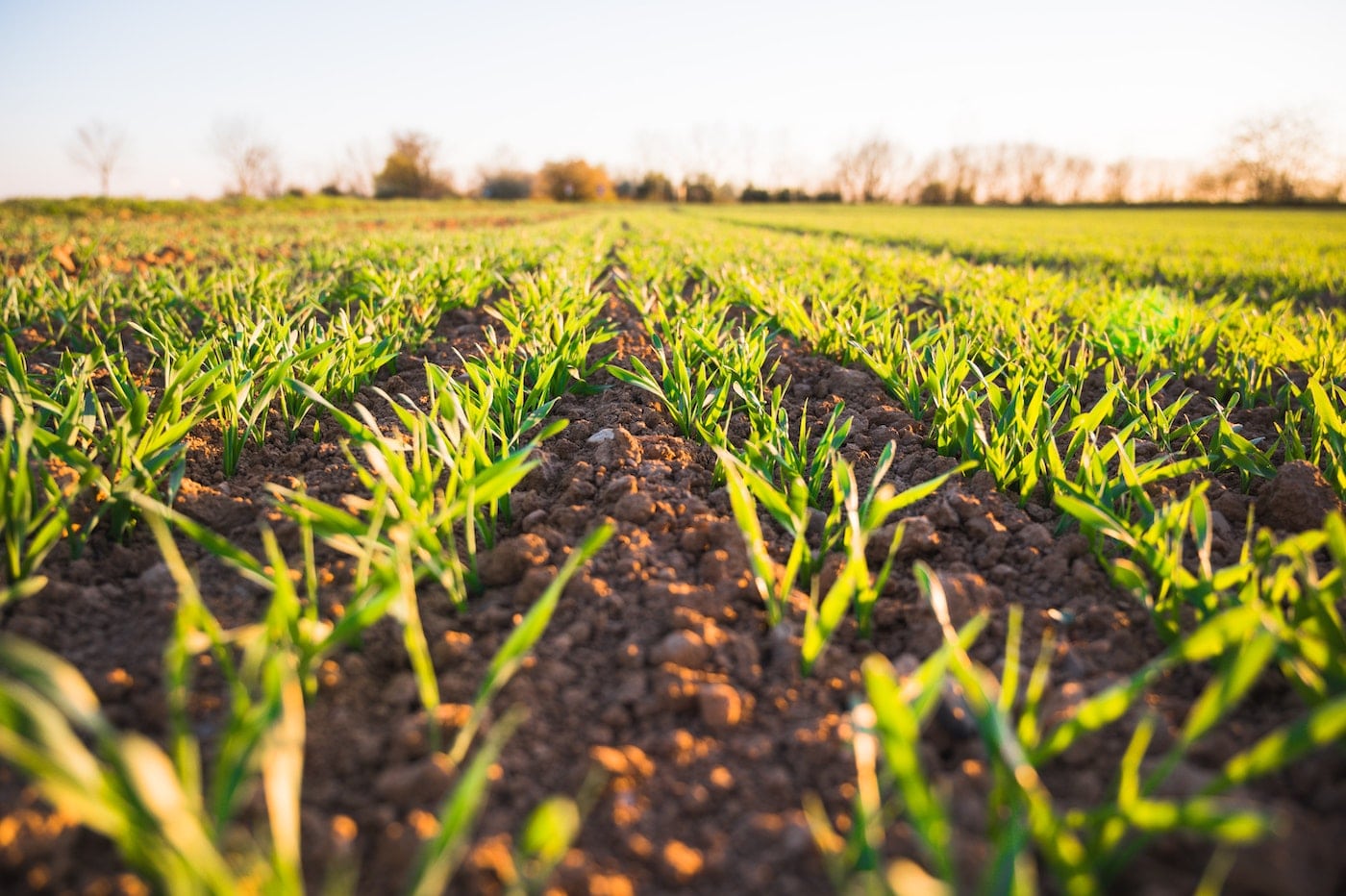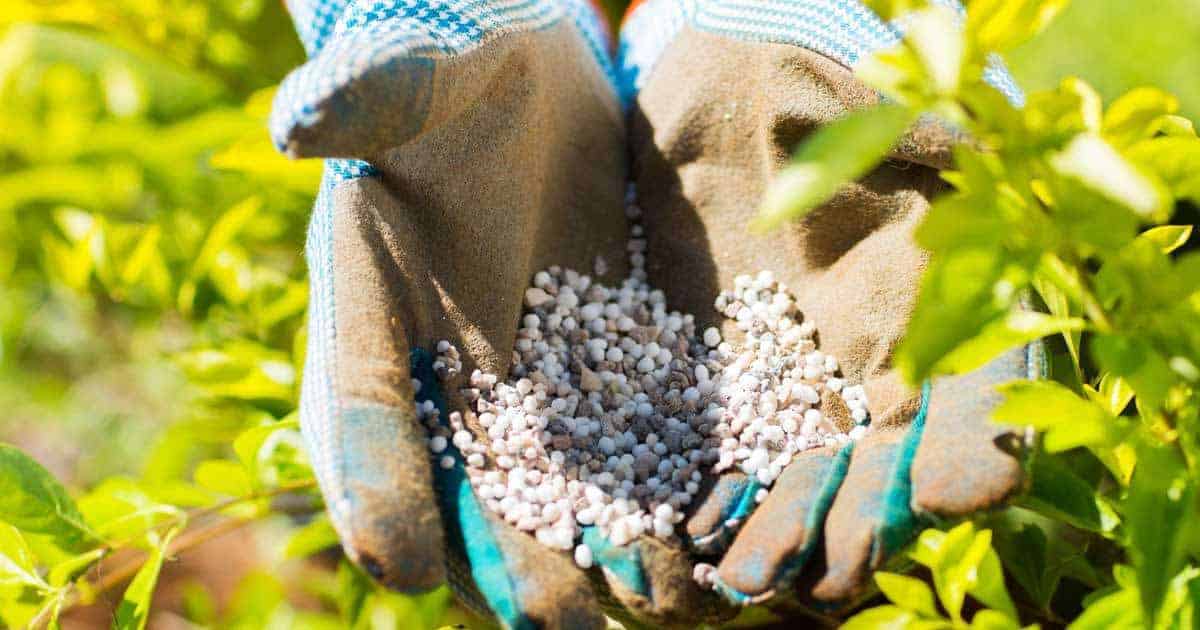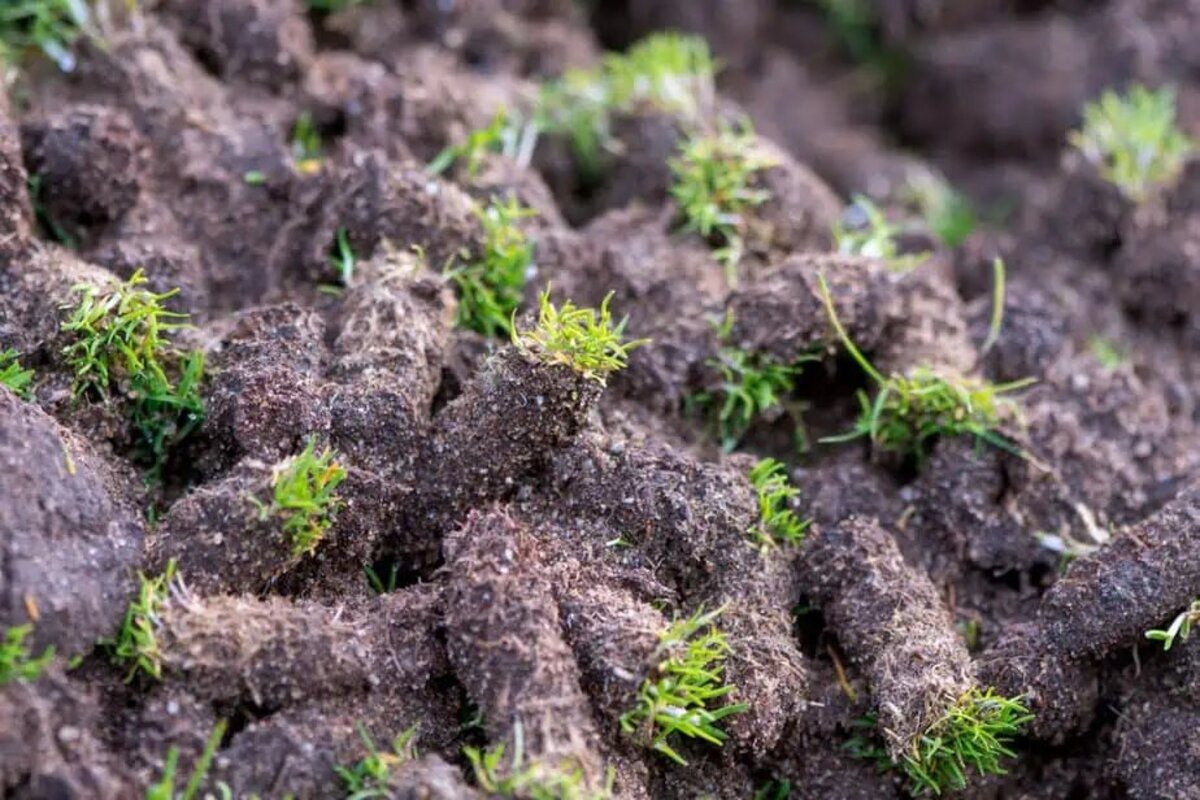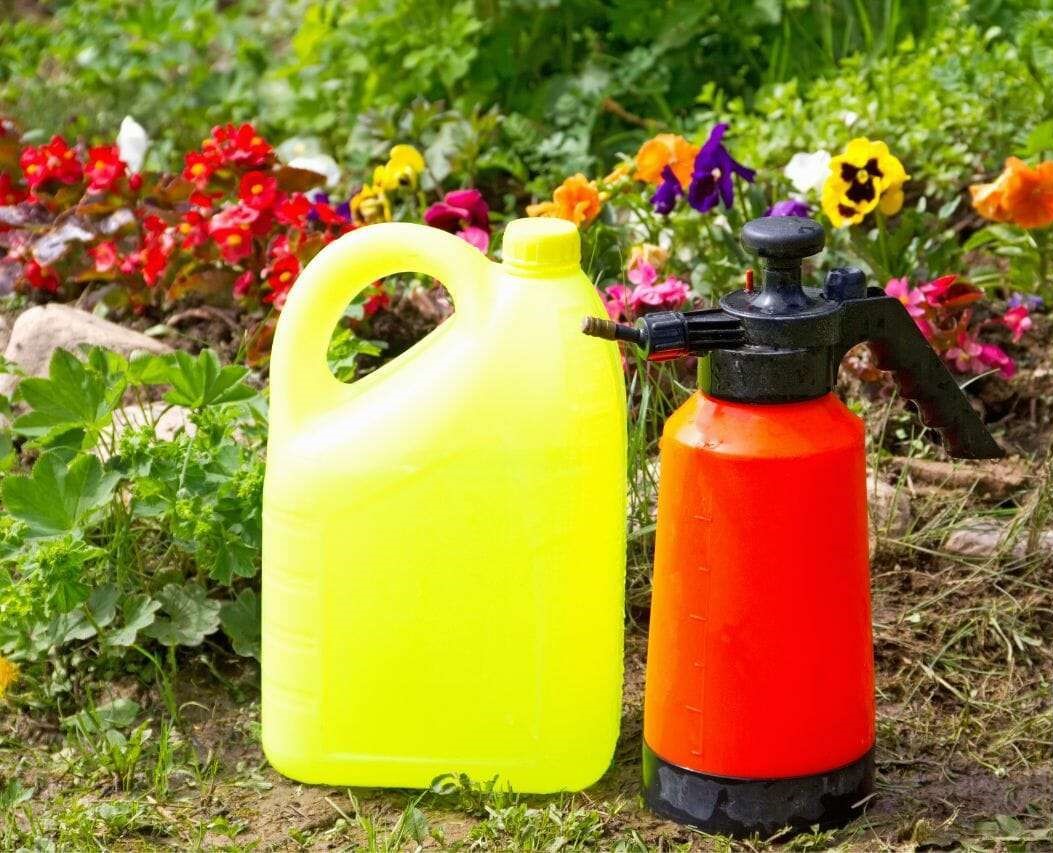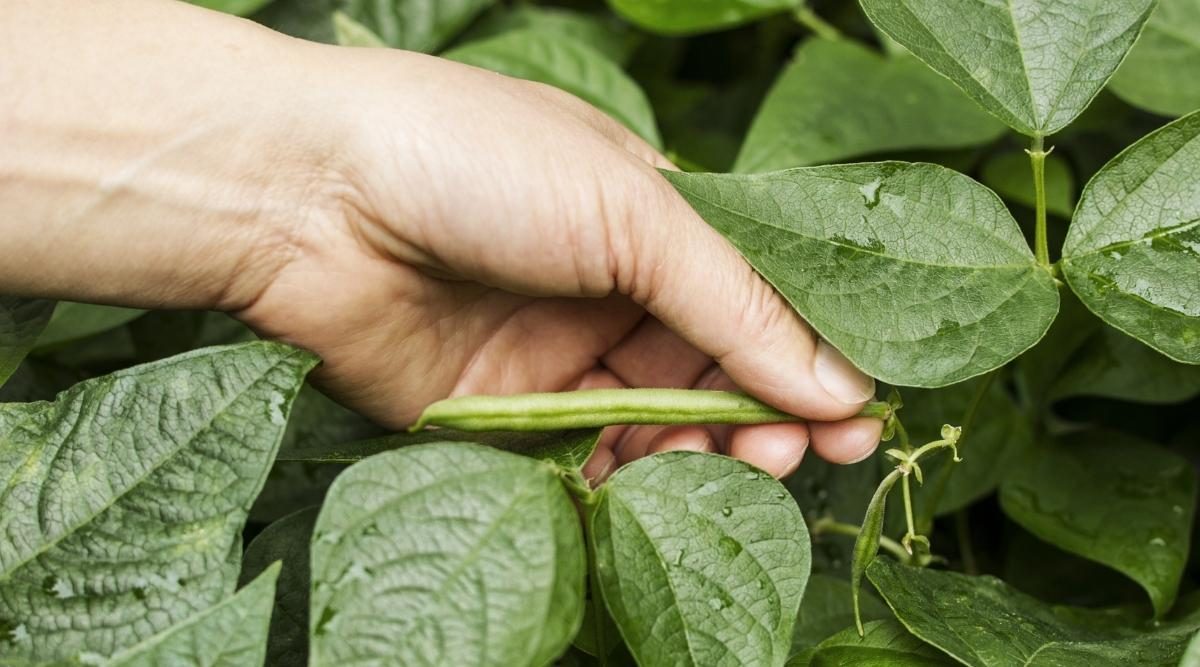Home>Types of Gardening>Edible Gardening>What Fertilizer To Use On Seedlings
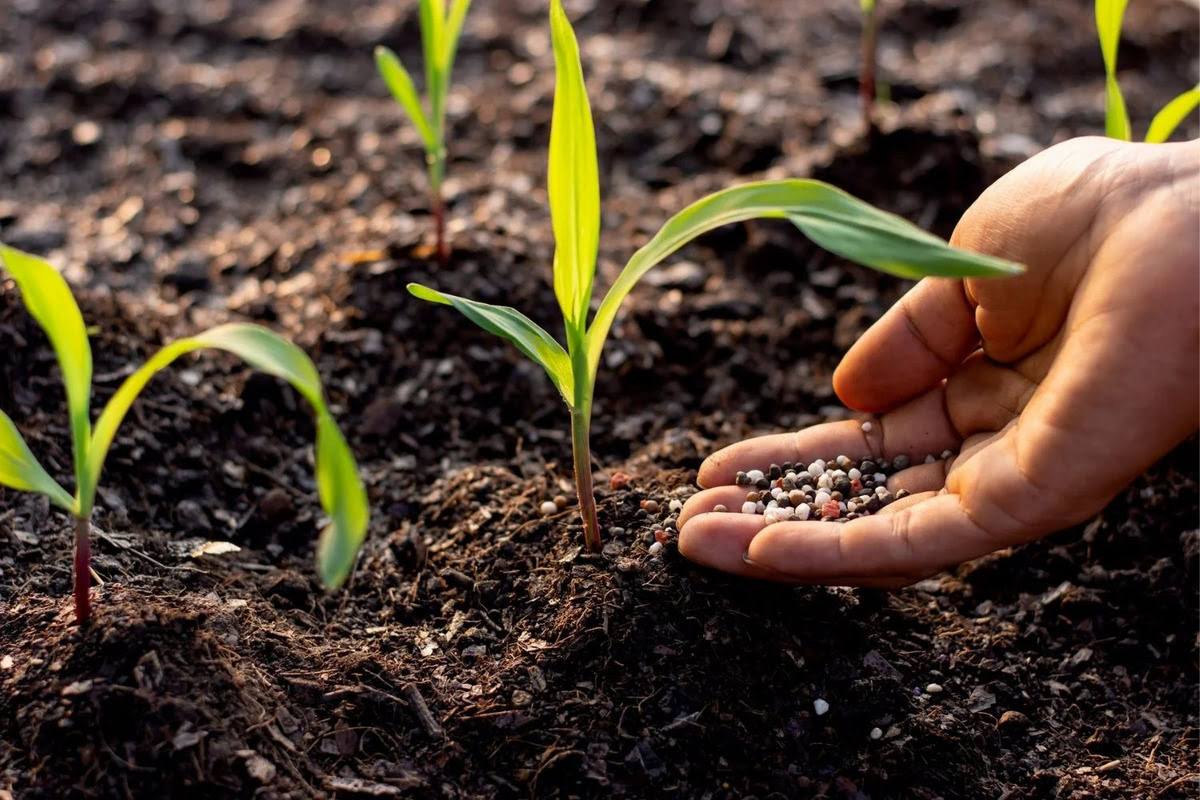

Edible Gardening
What Fertilizer To Use On Seedlings
Published: January 3, 2024
Discover the best fertilizer for seedlings in your edible garden. Boost growth and ensure healthy plants with expert tips and recommendations.
(Many of the links in this article redirect to a specific reviewed product. Your purchase of these products through affiliate links helps to generate commission for Chicagolandgardening.com, at no extra cost. Learn more)
Table of Contents
- Introduction
- Importance of Using the Right Fertilizer on Seedlings
- Factors to Consider When Choosing a Fertilizer for Seedlings
- Organic Fertilizers Suitable for Seedlings
- Inorganic Fertilizers Suitable for Seedlings
- Different Fertilizer Ratios and Their Effects on Seedlings
- How to Apply Fertilizers to Seedlings
- Common Mistakes to Avoid When Fertilizing Seedlings
- Conclusion
Introduction
When it comes to starting a successful garden, one of the keys to success is providing the right nutrients to your plants from the very beginning. This is particularly crucial for seedlings, as they are delicate and require adequate nourishment to develop into healthy, robust plants. Choosing the correct fertilizer for seedlings is essential for their overall growth and vitality.
Seedlings, which are young plants that have just germinated from seeds, are in a vulnerable and critical stage. They possess limited root systems and have not yet developed the ability to absorb nutrients efficiently from the soil. Therefore, it is crucial to supply them with a well-balanced fertilizer to ensure they receive the necessary nutrients for optimal growth.
However, selecting the right fertilizer for seedlings can be a daunting task, given the wide variety of options available in the market. Organic or inorganic? Nitrogen, phosphorus, or potassium-heavy? Liquid or granular? These are all crucial considerations to take into account when determining which fertilizer to use.
In this article, we will explore the importance of using the correct fertilizer on seedlings, factors to consider when choosing a fertilizer, suitable organic and inorganic options, the effects of different fertilizer ratios, how to apply fertilizers to seedlings, and common mistakes to avoid. By the end, you will have a comprehensive understanding of the best practices for fertilizing your seedlings and setting them up for success.
Importance of Using the Right Fertilizer on Seedlings
Choosing the right fertilizer for your seedlings is of utmost importance as it directly impacts their growth, development, and overall health. Here are a few reasons why using the correct fertilizer is crucial:
- Proper nutrient supply: Seedlings have specific nutrient requirements during their early stages of growth. The right fertilizer ensures that seedlings receive adequate amounts of essential nutrients such as nitrogen, phosphorus, and potassium, which are vital for their development.
- Boosting root development: A well-balanced fertilizer encourages the growth of strong and healthy roots. This is crucial for seedlings as they need a robust root system to absorb water and nutrients effectively from the soil.
- Enhancing plant vigor: Seedlings that receive the right nutrients from the beginning have increased vigor and resilience. They are more likely to withstand environmental stresses such as temperature fluctuations, pests, and diseases.
- Promoting optimal growth: The correct fertilizer provides seedlings with the necessary nutrients to promote rapid and healthy growth. This leads to bigger, stronger, and more productive plants in the long run.
- Preventing nutrient deficiencies: Seedlings are particularly susceptible to nutrient deficiencies due to their limited root system. Using the right fertilizer helps prevent deficiencies such as yellowing leaves, stunted growth, and poor overall plant vigor.
By choosing the appropriate fertilizer for your seedlings, you are setting them up for success and giving them the best possible start in their journey towards becoming productive and thriving plants.
Factors to Consider When Choosing a Fertilizer for Seedlings
Choosing the right fertilizer for your seedlings involves considering several key factors. These factors will help ensure that you select a fertilizer that meets the specific needs of your plants. Here are some important factors to keep in mind:
- Nutrient requirements: Different plants have varying nutrient requirements. Research the specific nutrient needs of the seedlings you are growing to determine the ideal fertilizer composition. Consider the ratio of nitrogen (N), phosphorus (P), and potassium (K) required for optimal growth.
- Fertilizer type: There are various types of fertilizers available, including organic and inorganic options. Organic fertilizers, derived from natural sources, provide a slow release of nutrients and improve soil health over time. Inorganic fertilizers, which are synthetic, offer a quick-release of nutrients.
- Nutrient availability: Some fertilizers may require microbial or chemical processes to make the nutrients available to plants. Ensure that the fertilizer you choose supplies nutrients in a form that seedlings can easily absorb.
- Soil type: Consider the characteristics of your soil, such as its pH level and nutrient content. This will help you select a fertilizer that complements your soil conditions and addresses any deficiencies.
- Application method: Determine the preferred method of application for your seedlings. Liquid fertilizers can be applied through watering, while granular fertilizers are typically incorporated into the soil before planting. Choose a fertilizer that aligns with your desired application method.
- Sustainability and environmental impact: If sustainability and environmental impact are important to you, consider using organic fertilizers, as they are derived from natural sources and are less likely to harm the environment.
By considering these factors, you can make an informed decision when selecting a fertilizer for your seedlings. Remember, choosing the right fertilizer will provide your seedlings with the necessary nutrients for healthy growth and maximize their chances of thriving.
Organic Fertilizers Suitable for Seedlings
Organic fertilizers offer a natural and sustainable option for nourishing seedlings. They provide a slow and steady release of nutrients, promoting healthy growth without the risk of over-fertilization. Here are some organic fertilizers that are particularly suitable for seedlings:
- Compost: Compost is a rich, organic matter that is created through the decomposition of plant materials. It is an excellent source of nutrients and improves soil structure. When applied as a top dressing or incorporated into the soil, compost provides a balanced supply of nutrients for seedlings.
- Manure: Animal manure, such as cow or chicken manure, is a valuable organic fertilizer. It is high in nitrogen, phosphorus, and potassium, and also improves soil fertility. However, it is essential to use well-aged or composted manure to avoid the risk of burning seedlings with excessive levels of nutrients.
- Seaweed: Seaweed is an excellent source of trace minerals and growth-promoting hormones. It can be used as a liquid fertilizer by steeping dried or fresh seaweed in water. The resulting nutrient-rich liquid can then be applied to seedlings.
- Fish emulsion: Fish emulsion is a concentrated liquid fertilizer made from fish waste. It is an excellent source of nitrogen, phosphorus, and trace minerals. Dilute fish emulsion with water and apply it to seedlings to provide a quick boost of nutrients.
- Bone meal: Bone meal is a slow-release organic fertilizer derived from ground animal bones. It is high in phosphorus, which is essential for root and flower development. Incorporate bone meal into the soil before planting seedlings to provide them with a long-lasting supply of phosphorus.
When using organic fertilizers, it is important to follow the recommended application rates. Over-application can lead to nutrient imbalances or even damage the seedlings. Additionally, remember that organic fertilizers gradually release nutrients over time, so it may take a bit longer to see visible effects compared to synthetic fertilizers.
By choosing organic fertilizers for your seedlings, you can nourish them in a sustainable and environmentally friendly manner, while ensuring their long-term health and productivity.
Inorganic Fertilizers Suitable for Seedlings
Inorganic fertilizers, also known as synthetic or chemical fertilizers, provide a quick and easily accessible source of nutrients for seedlings. They are formulated with specific nutrient ratios to address the needs of different plants. Here are some common inorganic fertilizers that are suitable for seedlings:
- Nitrogen (N) fertilizers: Nitrogen is crucial for promoting leafy growth in seedlings. Inorganic fertilizers high in nitrogen, such as ammonium nitrate or urea, provide a rapid boost of this essential macronutrient.
- Phosphorus (P) fertilizers: Phosphorus is essential for root development and overall plant health. Inorganic fertilizers like triple superphosphate or monoammonium phosphate supply an easily absorbable form of phosphorus to seedlings.
- Potassium (K) fertilizers: Potassium is important for enhancing plant vigor and disease resistance. Inorganic fertilizers containing potassium, such as potassium sulfate or potassium chloride, provide this essential nutrient to seedlings.
- Complete fertilizers: Complete fertilizers, also known as balanced fertilizers, contain a mix of nitrogen, phosphorus, and potassium in a balanced ratio. Examples include 10-10-10 or 20-20-20 formulations. These fertilizers provide a comprehensive nutrient supply for seedlings.
- Controlled-release fertilizers: Controlled-release fertilizers release nutrients slowly over an extended period, ensuring a steady supply of nutrients to seedlings. They can be especially beneficial for long-term growth and development. Examples include polymer-coated fertilizers or slow-release granules.
When using inorganic fertilizers, it is crucial to follow package instructions carefully. Over-fertilization can lead to nutrient imbalances or even burn the delicate roots of seedlings. It is also essential to consider the specific nutrient requirements of the seedlings you are growing and select an appropriate fertilizer accordingly.
Remember, inorganic fertilizers provide a quick and targeted nutrient supply to seedlings, but they may lack the long-term soil-building benefits of organic fertilizers. It’s a personal choice whether to use organic or inorganic fertilizers, and some gardeners prefer to use a combination of both for their seedlings.
By using inorganic fertilizers, you can efficiently supply essential nutrients to your seedlings and promote their healthy growth and development.
Different Fertilizer Ratios and Their Effects on Seedlings
The ratio of nitrogen (N), phosphorus (P), and potassium (K) in a fertilizer has a significant impact on the growth and development of seedlings. Different ratios have distinct effects on various aspects of plant growth. Here are some common fertilizer ratios and their effects on seedlings:
- Nitrogen-heavy (N-P-K) ratio: Fertilizers with a higher proportion of nitrogen are beneficial for promoting lush, leafy growth in seedlings. Nitrogen is essential for the production of chlorophyll, which is responsible for the green color in plants. However, excessive nitrogen can lead to a shallow root system or weak stems, so it is important to balance nitrogen levels with other nutrients.
- Phosphorus-heavy (N-P-K) ratio: Fertilizers high in phosphorus promote strong root development, early flower formation, and fruit production in seedlings. Phosphorus is crucial for energy transfer and overall plant health. Seedlings that receive adequate phosphorus are more likely to establish healthy root systems and develop into robust plants.
- Potassium-heavy (N-P-K) ratio: Fertilizers rich in potassium contribute to improved disease resistance, water regulation, and overall stress tolerance in seedlings. Potassium helps plants absorb and utilize other nutrients effectively. Seedlings that receive sufficient potassium are better equipped to deal with environmental stresses and produce higher-quality yields.
- Complete (balanced) fertilizer ratio: Fertilizers with a balanced ratio of N, P, and K, such as 10-10-10 or 20-20-20, provide an even supply of all three main nutrients. Balanced fertilizers offer a comprehensive nutrient boost to seedlings, promoting overall growth and development. They are a good option when the specific nutrient requirements of the seedlings are not well-defined.
It is important to note that the specific fertilizer ratio required may vary depending on the type of plants you are growing. Different plant species have varying nutrient needs, so it’s crucial to understand the specific requirements of your seedlings before choosing a fertilizer.
Additionally, it’s important to avoid over-fertilization, as excessive nutrient levels can harm seedlings. Always follow the recommended application rates to prevent nutrient imbalances or burn the delicate roots of the seedlings.
By selecting the appropriate fertilizer ratio for your seedlings, you can provide them with the right combination of nutrients necessary for their healthy growth and development.
How to Apply Fertilizers to Seedlings
Proper application of fertilizers is crucial to ensure that seedlings receive the necessary nutrients for healthy growth without causing harm. Here are some essential steps to follow when applying fertilizers to seedlings:
- Timing: Apply fertilizers to seedlings when they have established their first true leaves. This is typically a few weeks after germination or when they are actively growing.
- Fertilizer selection: Choose a fertilizer that matches the specific nutrient requirements of the seedlings. Consider factors such as the type of fertilizer (organic or inorganic) and the N-P-K ratio suitable for the plants you are growing.
- Dilution or dosage: If using liquid fertilizers, follow the package instructions for dilution ratios. For granular fertilizers, carefully measure and apply the recommended dosage based on the size and age of the seedlings.
- Application method: Different fertilizers may require different application methods. For liquid fertilizers, evenly distribute the solution around the base of the seedlings. Granular fertilizers can be applied by sprinkling them around the seedlings, keeping the granules away from direct contact with the stems.
- Avoiding leaf contact: It is important to prevent fertilizers from coming into direct contact with the leaves of seedlings. This can cause leaf burn or damage. Aim for accuracy when applying fertilizers to minimize contact with the foliage.
- Watering: After applying fertilizers, it is recommended to water the seedlings gently. This helps to distribute the nutrients into the soil and promotes absorption by the roots.
- Observation and adjustment: Monitor the seedlings closely after fertilization. Watch for any signs of nutrient deficiencies or excesses, such as yellowing leaves or stunted growth. Adjust the fertilizer application as necessary, following the specific needs of the seedlings.
Remember to always follow the instructions provided by the fertilizer manufacturer and apply fertilizers in moderation to avoid harming the seedlings. Over-fertilization can lead to nutrient imbalances and can even result in reduced growth or plant damage. Proper application ensures that seedlings receive the nutrients they need to thrive without any negative side effects.
By following these steps, you can effectively provide your seedlings with the right amount of nutrients to support their healthy development and growth.
Common Mistakes to Avoid When Fertilizing Seedlings
Fertilizing seedlings is a critical step in ensuring their healthy growth and development. However, there are common mistakes that gardeners should avoid to prevent any potential harm or negative impact on the seedlings. Here are some common mistakes to be aware of:
- Over-fertilization: Applying excessive amounts of fertilizer can cause nutrient imbalances, leading to stunted growth or even plant damage. Always follow the recommended application rates provided by the fertilizer manufacturer to avoid over-fertilization.
- Under-fertilization: On the other hand, under-fertilization can result in nutrient deficiencies, leading to weak and malnourished seedlings. Make sure to provide the necessary nutrients in appropriate quantities to support optimal growth.
- Improper timing: Fertilizing seedlings too early or too late can disrupt their growth. Wait until the seedlings have developed their first true leaves before applying fertilizer, as this indicates they are ready to absorb nutrients effectively.
- Using the wrong fertilizer: Different plants have specific nutrient requirements. Using the wrong type or ratio of fertilizer can lead to inadequate nutrients or nutrient imbalances. Research and understand the specific needs of the seedlings you are growing to choose the appropriate fertilizer.
- Applying fertilizers on dry soil: Fertilizers should be applied to moist soil to allow proper nutrient absorption. Applying fertilizers to dry soil can result in fertilizer burn or reduced effectiveness. Water the soil before and after fertilization to help dissolve and distribute the nutrients.
- Applying fertilizers too close to seedlings: Direct contact between fertilizers and seedling stems or leaves can cause burning or damage. Keep a distance between the fertilizer and the seedlings, ensuring the nutrients are applied evenly to the surrounding soil.
- Not adjusting fertilization based on plant growth stage: As seedlings grow, their nutrient requirements change. Failure to adjust the fertilization regimen accordingly can result in nutrient deficiencies or excesses. Monitor the growth of the seedlings and adjust fertilizer application as needed.
By avoiding these common mistakes, you can provide your seedlings with the right amount and balance of nutrients, promoting their healthy growth and minimizing the risk of negative effects.
Remember to stay attentive to the specific needs and characteristics of your seedlings, and always follow the recommended guidelines for fertilization to achieve the best results.
Conclusion
Fertilizing seedlings is a crucial aspect of successful gardening and plays a significant role in their overall growth and development. By using the right fertilizer, you can provide seedlings with the essential nutrients they need to thrive and become healthy, productive plants.
When choosing a fertilizer, consider factors such as the nutrient requirements of your seedlings, the type of fertilizer (organic or inorganic), and the specific N-P-K ratio suitable for your plants. Organic fertilizers offer natural and sustainable options, while inorganic fertilizers provide quick and targeted nutrient supply.
Proper application of fertilizers is essential to avoid common mistakes such as over-fertilization, under-fertilization, and applying fertilizers at the wrong time or in the wrong manner. Following the recommended dosage, considering the growth stage of the seedlings, and avoiding direct contact with the foliage will help ensure effective fertilization without harm.
Remember to observe your seedlings closely and make adjustments as needed. Nutrient deficiencies or excesses can be detrimental to their health and growth. By taking care to provide the right nutrients in the right amounts, you can give your seedlings the best chance at thriving.
In conclusion, understanding the importance of choosing the right fertilizer, considering the factors involved, and being mindful of proper fertilizer application techniques are key to fostering healthy seedlings. By incorporating these practices into your gardening routine, you will set your seedlings on the path to success and enjoy the bountiful rewards of a thriving garden.

